
 |

|
| ActiveWin: Reviews | Active Network | New Reviews | Old Reviews | Interviews |Mailing List | Forums |
|
|
|
|
|
DirectX |
|
ActiveMac |
|
Downloads |
|
Forums |
|
Interviews |
|
News |
|
MS Games & Hardware |
|
Reviews |
|
Support Center |
|
Windows 2000 |
|
Windows Me |
|
Windows Server 2003 |
|
Windows Vista |
|
Windows XP |
|
|
|
|
|
|
|
News Centers |
|
Windows/Microsoft |
|
DVD |
|
Apple/Mac |
|
Xbox |
|
News Search |
|
|
|
|
|
|
|
ActiveXBox |
|
Xbox News |
|
Box Shots |
|
Inside The Xbox |
|
Released Titles |
|
Announced Titles |
|
Screenshots/Videos |
|
History Of The Xbox |
|
Links |
|
Forum |
|
FAQ |
|
|
|
|
|
|
|
Windows XP |
|
Introduction |
|
System Requirements |
|
Home Features |
|
Pro Features |
|
Upgrade Checklists |
|
History |
|
FAQ |
|
Links |
|
TopTechTips |
|
|
|
|
|
|
|
FAQ's |
|
Windows Vista |
|
Windows 98/98 SE |
|
Windows 2000 |
|
Windows Me |
|
Windows Server 2002 |
|
Windows "Whistler" XP |
|
Windows CE |
|
Internet Explorer 6 |
|
Internet Explorer 5 |
|
Xbox |
|
Xbox 360 |
|
DirectX |
|
DVD's |
|
|
|
|
|
|
|
TopTechTips |
|
Registry Tips |
|
Windows 95/98 |
|
Windows 2000 |
|
Internet Explorer 5 |
|
Program Tips |
|
Easter Eggs |
|
Hardware |
|
DVD |
|
|
|
|
|
|
|
ActiveDVD |
|
DVD News |
|
DVD Forum |
|
Glossary |
|
Tips |
|
Articles |
|
Reviews |
|
News Archive |
|
Links |
|
Drivers |
|
|
|
|
|
|
|
Latest Reviews |
|
Xbox/Games |
|
Fallout 3 |
|
|
|
Applications |
|
Windows Server 2008 R2 |
|
Windows 7 |
|
|
|
Hardware |
|
iPod Touch 32GB |
|
|
|
|
|
|
|
Latest Interviews |
|
Steve Ballmer |
|
Jim Allchin |
|
|
|
|
|
|
|
Site News/Info |
|
About This Site |
|
Affiliates |
|
Contact Us |
|
Default Home Page |
|
Link To Us |
|
Links |
|
News Archive |
|
Site Search |
|
Awards |
|
|
|
|
|
|
|
Credits |

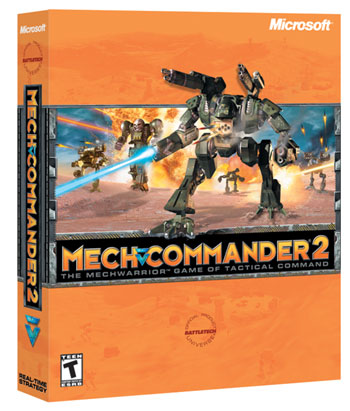
|
Product: MechCommander 2 Company: Microsoft Website: http://www.microsoft.com Estimated Street Price: $54.95 Review By: Julien Jay |
Strategy
|
Table Of Contents |
Each mission takes place on a different landscape. Microsoft MechCommander 2 missions will unveil various terrains with various conditions: mountains, cliffs, rain, snow, rivers, night, and trees. Each terrain is different and features a special geography that affects your strategy. For example when your Mechs are on cliffs their progression will be slowed by the incline of the terrain. When your Mechs advance in a river they’ll be slowed down too, but they’ll heat less allowing a longer use of your armor. Plus if the river is too deep between two islands the only way to get on this island is to use Mechs that have jumpers.
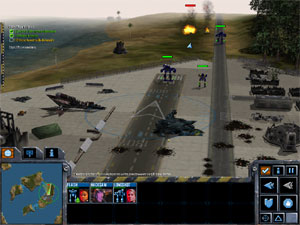
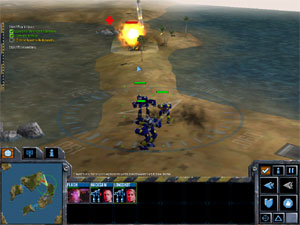
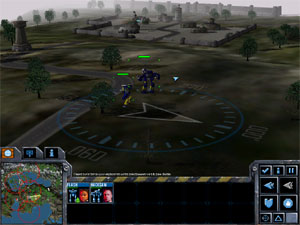
Microsoft
MechCommander 2 ScreenShots (click to enlarge)
During missions you’ll have to capture buildings in order to gain control of the various installations of an enemy’s military base. If you manage to capture the building that controls the missiles/turrets, your Mechs will no longer be targeted by those defense systems: instead your enemies will now be the target of their own missiles! Nerve of every war is money. MechCommander 2 obeys the rule and during each mission you can capture resources buildings or trucks to get more money so you can order support units or buy new mechs. Some missions might contain a few places where you can repair your mechs: to do so you have to capture the Mech repair buildings. If your Mechs are too severely injured and that no Mech repair building is in view, the best thing is to call for a repair truck from the support area of the game. Once delivered, the repair truck will fix your mechs in the limit of its available resources.
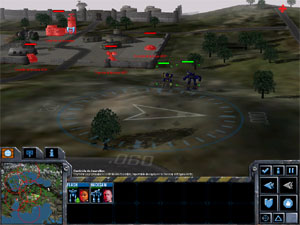
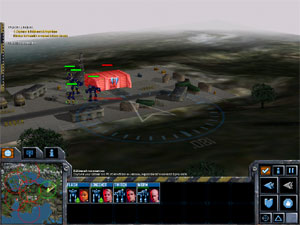
Capturing
buildings and Resources barracks (click to enlarge)
Depending on the map, you might choose pilots with different skills and customize the current configuration of your Mechs. For example in a hilly environment, Mechs with long range weapons are much more efficient since they can keep a safe distance from their objectives while being able to shoot. Microsoft MechCommander 2 offers interesting, yet linear, missions with a good studied difficulty variation (the game offers four level of difficulty to prolong its life). When missions become hard you’ll probably use the support options like: air strikes, artillery, sensor probes. Problem is that these support tools are limited since they cost several thousand points of resources. That’s interesting because you’ll have to elaborate tactics where you never run out or resources to order supplementary support. You should always be able to get a repair truck and order and air strike at the same time, for the success of a mission.
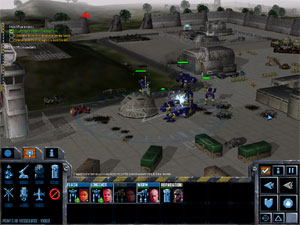
Repairing a
Mech using the Repair Truck (click to enlarge)
Some maps contain areas that are totally undermined: those mines are difficult to spot, in fact most of the time you’ll know the ground is mined because mines have exploded under your Mechs. Mines are a serious unattended threat to the success of your mission, because they are invisible and cause severe damages to your Mechs. Worst once you’re in a field of mines getting out of it will result in more damage to the Mech. That’s why the support menu lets you access a mine detector to prevent those problems.
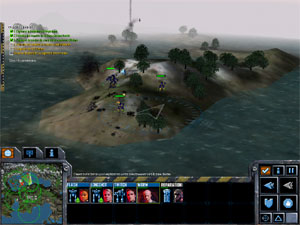
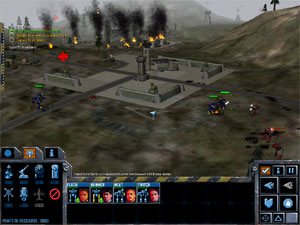
Microsoft
MechCommander 2 Combats (click to enlarge)
With MechCommander 2 combats are intense and it’s a fact you’ll lose Mechs during each battle especially when missions become tougher. When the enemy (or you) lose a Mech, you have the ability to salvage this Mech directly on the battlefield rather than purchase it later at your own cost. Salvaging Mechs cost resource points but it’s very interesting since you can enlarge your commando with more units. Note that the computer automatically assigns the most commissioned officer to a just salvaged Mech. Salvaged Mechs are generally in bad shape and you will have to repair them most of the time so they are back to an acceptable level: so you’ll have to make the good decision whether it’s valuable or not to salvage a Mech. One thing to take into consideration is that if the Mech you want to salvage has lost an arm, this arm won’t be replaced by the salvage aircraft.
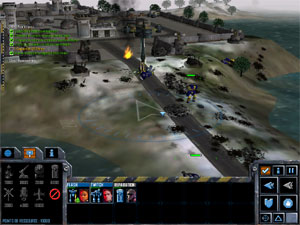
Salvaging a
Mech (click to enlarge)
During the progress of each mission, secondary objectives might appear to spice up the game. They are interesting because most of the time, those optional secondary objectives might bring you new useful resource points. At the end of each mission statistics are shown: the number of destroyed units per pilot is shown and pilots can be promoted (if they have met the requirements during a mission) to the specialization of your choice. If you have failed the current mission you’ll have to rerun it otherwise you won’t be able to take the next mission.
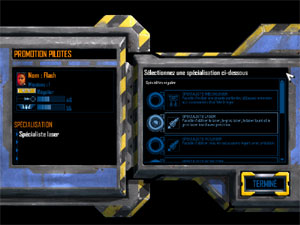
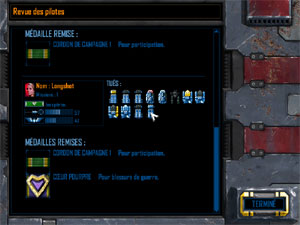
Pilots Promotion and End of
Mission Statistics Screens (click to enlarge)
Realization
Microsoft MechCommander 2 is naturally captivating and appealing thanks to the amazing 3D graphics engine included that makes the graphics and maps look real. The game is marvellously served by this brand new graphics engine that renders everything with a lot of details (smoke of the rockets, trees that tremble to the weight of the Mechs, footsteps of the Mechs, wakes when the Mechs march through the water, sparks when the mech is damaged, etc.) that reinforce the overall realism. The Mechs are wonderful and the various levels of zoom let you have a closer view of the battlefield. You can change the camera view (in every direction thanks to the 360° view support) at your convenience by simply holding the left button of your mouse while moving it. At first controlling the view of the map is really disrupting since you perpetually have to rotate the map, zoom in or zoom out to get a clear view of the situation. Nonetheless you’ll quickly understand how to manoeuvre the camera to get the sight you need. Graphics are impressive but they clearly require a powerful configuration. Indeed modest computers with a 800MHz CPU and a GeForce 2 MX will have serious troubles to render combats involving dozens of robots in a 1280x1024 resolution.
To match the high quality of the graphics the sound environment seems to have been the object of every attention by the development team. The music and the sound effects are simply perfect adding to the life like impression the game emanates: you'll even be honoured to hear pilots' comments. Owners of the Microsoft SideWinder Strategic Commander will experience a natural and easy handling of the game through this device.



